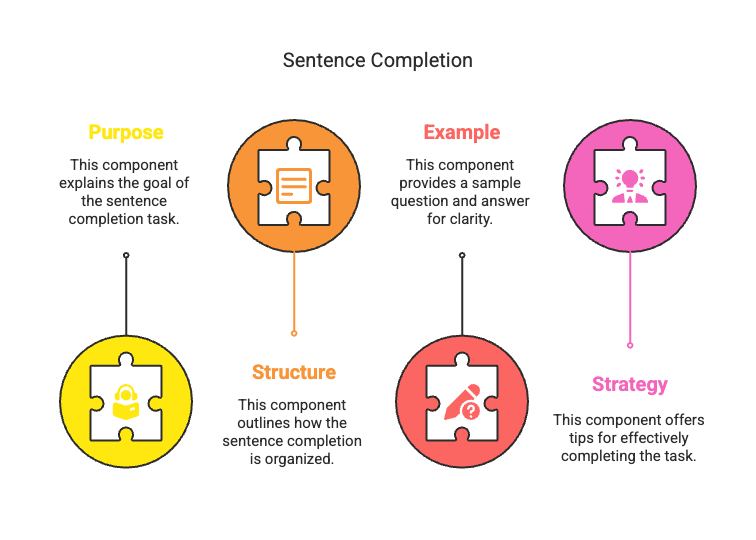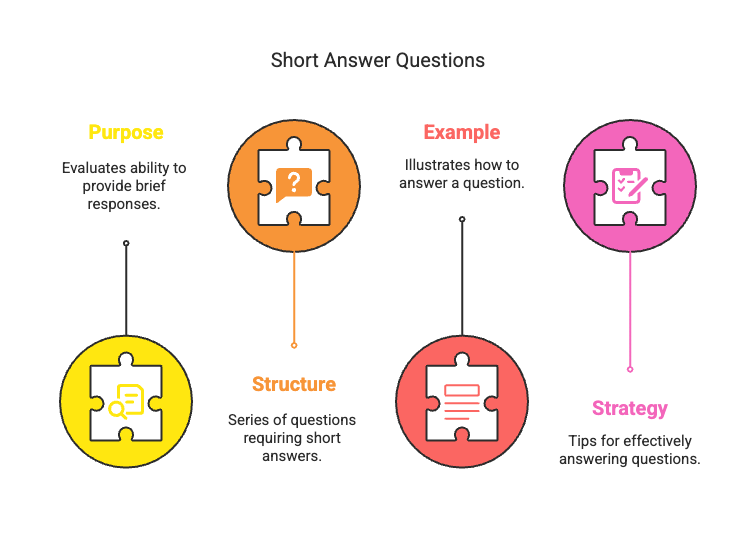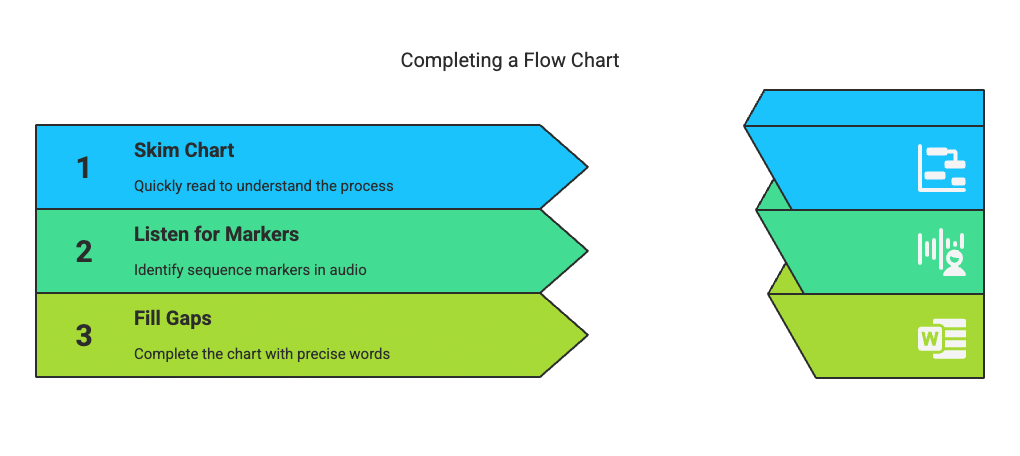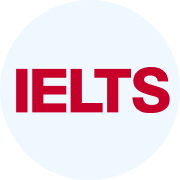IELTS Listening: Mastering Question Types | Listening for IELTS PDF Download
The IELTS Listening Section assesses your ability to comprehend spoken English through a variety of question formats. Among these, the first three types listed—Sentence Completion, Summary Completion, and Form Completion—require distinct skills and strategies. Below, each type is explained to aid your preparation effectively.
1. Sentence Completion
Purpose: This question type involves listening to a recording and filling in missing words or phrases in incomplete sentences to complete their meaning accurately. It tests your ability to identify specific details and understand the context within a conversation or monologue.
Structure: You are provided with a set of sentences, each with one or two blanks, and must select the correct words (typically limited to a maximum number, e.g., two or three) from the audio. Note that the question may ask about a number, in which case you have to select the number and not the word (e.g., "3" and not "three").
Example: If the sentence is “The meeting will take place at ___ o’clock,” and the recording states “The meeting will take place at 3 o’clock,” the answer is “3.”
Strategy: Focus on keywords in the sentence (e.g., “meeting,” “place”) to anticipate the answer. Listen for synonyms or paraphrases, and write clearly within the word limit to avoid errors. Practice predicting answer types (e.g., time, place) to stay ahead.

2. Summary Completion
Purpose: This task requires you to complete a summary of the listening passage by inserting missing information, assessing your ability to grasp the overall content and key points of the audio. It evaluates both listening comprehension and the ability to identify main ideas.
Structure: You receive a concise summary with gaps, and you must fill these with words or phrases (often restricted to a set number, e.g., two words) sourced directly from the recording.
Example: If the summary reads “The event aims to ___ local culture,” and the audio mentions “The event aims to promote local culture,” the answer is “promote.”
Strategy: Skim the summary before listening to note focus areas (e.g., purpose, location). Underline keywords and listen for matching ideas, even if rephrased. Ensure accuracy in spelling and adherence to the word limit for full marks.
3. Form Completion
Purpose: This question type involves filling in a form—such as an application or registration—based on information provided in the audio, testing your ability to capture specific details like names, dates, or numbers accurately.
Structure: You are given a form with blank fields (e.g., name, address, date), and you must insert the exact information heard, usually within a specified word limit (e.g., one or two words).
Example: If the form has a “Date of Birth” field, and the recording states “Her date of birth is 15th March,” the answer is “15th March.”
Strategy: Preview the form to identify required details (e.g., personal info, event dates). Listen carefully for numbers or proper nouns, and double-check spelling (e.g., “March” not “Murch”). Stay within the word limit to avoid losing points.
4. Multiple Choice
Purpose: This question type assesses your ability to understand detailed information, opinions, or the main ideas from the audio by selecting the correct option from a set of choices. It tests your listening precision and ability to distinguish between similar ideas.
Structure: You are presented with a question or statement followed by three or four options (e.g., A, B, C, or D). You must choose the one that best matches the information heard in the recording.
Example: If the question is “What is the main topic of the talk?” with options A) Weather, B) Travel, C) Education, D) Sports, and the audio discusses “school systems,” the answer is C) Education.
Strategy: Preview the question and options before listening to identify keywords. Listen for paraphrases or distractors (wrong but close answers) and eliminate unlikely choices. Mark your answer clearly on the answer sheet.
5. Short Answer Questions
Purpose: This task evaluates your ability to provide brief, specific responses to questions based on the audio, focusing on your capacity to extract and articulate key details accurately.
Structure: You receive a series of questions, and you must write short answers (typically limited to a maximum of two or three words) directly from the recording.
Example: If the question is “Where is the event held?” and the audio states “The event is held in the city park,” the answer is “city park.”
Strategy: Read the questions beforehand to anticipate answers (e.g., place, time). Listen for exact phrases, avoid adding extra words, and check spelling and grammar to ensure correctness within the word limit.

6. Table Completion
Purpose: This question type requires you to fill in a table with information from the audio, assessing your ability to organize and record details such as schedules, features, or data points effectively.
Structure: You are given a table with blank cells, and you must insert the appropriate words or numbers (often restricted to a set number, e.g., two words) based on what you hear.
Example: If the table has a “Time” column and the audio says, “The meeting starts at 10 a.m.,” the answer is “10 a.m.”
Strategy: Skim the table before listening to note categories (e.g., time, location). Underline key terms and listen for matching details. Write neatly and adhere to the word limit to avoid losing marks.
7. Diagram Labelling
Purpose: This question type assesses your ability to label parts of a diagram based on information provided in the audio, testing your capacity to recognise and associate detailed descriptions with visual elements.
Structure: You are given a diagram (e.g., of a machine, animal, or process) with numbered blanks, and you must fill these with words or phrases (typically limited to a maximum of two or three words) derived from the recording.
Example: If the diagram shows a car engine and the audio states, “The oil filter is located here,” with a blank near that part, the answer is “oil filter.”
Strategy: Preview the diagram to understand its components. Listen for descriptive cues (e.g., location, function) and match them to the blanks. Write legibly and adhere to the word limit to ensure accuracy.
8. Map/Plan Completion
Purpose: This task evaluates your ability to complete a map or plan (e.g., a building layout or town map) using information from the audio, assessing your skill in interpreting spatial relationships and directions.
Structure: You receive a map or plan with labelled points or blanks, and you must insert the correct words or phrases (often restricted to a set number, e.g., two words) based on the spoken content.
Example: If the map has a blank near a building and the audio says, “The library is next to the park,” the answer is “library.”
Strategy: Study the map before listening to identify key landmarks. Listen for directional terms (e.g., “left,” “opposite”) and link them to the blanks. Double-check spelling and stay within the word limit.
9. Flow Chart Completion
Purpose: This question type requires you to fill in a flow chart that outlines a process or sequence based on the audio, testing your ability to follow and record procedural information accurately.
Structure: You are provided with a flow chart containing gaps, and you must complete these with words or phrases (typically limited to a maximum of two or three words) sourced from the recording.
Example: If the flow chart shows a step with a blank and the audio states, “Next, add water to the mixture,” the answer is “add water.”
Strategy: Skim the flow chart to grasp the process (e.g., cooking, manufacturing). Listen for sequence markers (e.g., “first,” “then”) and fill in the gaps accordingly. Ensure neat handwriting and compliance with the word limit.

|
104 videos|39 docs
|
FAQs on IELTS Listening: Mastering Question Types - Listening for IELTS
| 1. What are the main question types in the IELTS Listening section? |  |
| 2. How can I improve my listening skills for the IELTS exam? |  |
| 3. Are there any tips for managing time during the IELTS Listening test? |  |
| 4. How should I handle unfamiliar vocabulary during the Listening test? |  |
| 5. Is it important to practice with actual IELTS Listening tests? |  |
















